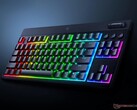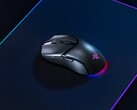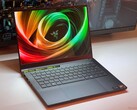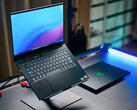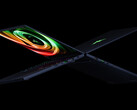Verdict - Blade 14 2025 is a very good all-rounder
Just like the new Blade 16, the 2025 model of the Blade 14 gets slimmer and lighter. The chassis is still extremely sophisticated with perfect build quality. There are still plenty of ports, you get a comfortable keyboard, and the clickpad is excellent, but there is still room for improvements in terms of the sound system. The new OLED screen offers great image quality with fast response times and accurate colors, but the brightness (especially in HDR mode) could be higher.
Razer uses the AMD mobile processor Ryzen AI 9 365 in combination with soldered RAM, which is a downgrade compared to last year. You can get up to 64 GB RAM, but the two SO-SIMM slots of the previous models were simply much more convenient. The CPU performance is just slightly better compared to the old Ryzen 9 8945HS.
The new generation of the RTX 5070 Laptop runs with a TGP of up to 115 Watts and the performance is completely okay in general, but the amount of 8 GB VRAM results in some limitations, especially in the QHD resolution. We would basically recommend sticking to the 1080p resolution, where there are no major issues. The 1080p gaming performance of the Asus ROG Zephyrus G14 with the RTX 5070 Ti Laptop is not that much better. You can start to see the real benefit of the 5070 Ti Laptop in the QHD resolution.
However, the G14 with the RTX 5070 Ti Laptop is around 1000 Euros more expensive and the price performance ratio is good with an RRP of 2399 Euros. The worse equipped Zephyrus G14 with the slower RTX 5060 Laptop, 16 GB RAM and the Ryzen 9 270 already costs 2299 Euros. If you are looking for a mobile all-rounder with good 1080p gaming capabilities, the Blade 14 is a great choice.
Pros
Cons
Table of Contents
- Verdict - Blade 14 2025 is a very good all-rounder
- Specifications
- Case - High quality and noticeably more compact
- Connectivity - USB 4 and a fast card reader
- Input Devices - Keyboard with per-key illumination
- Display - Blade 14 now with 120-Hz OLED
- Performance - 2025 Blade 14 without upgradeable RAM
- Emissions - Loud cooling unit
- Energy management - Improved stamina
- Notebookcheck rating
- Potential competitors in comparison
Razer updates Blade 14 and equips it with a slimmer as well as lighter chassis, just like we saw on the larger Blade 16 2025. There is also a new OLED screen for the 14-inch gamer, which is driven by Nvidia's latest mobile GPUs. However, the RTX 5070 Laptop (115 Watts) is the fastest option. The processor is the AMD Ryzen AI 9 365 in combination with 32 GB RAM, but you can also get 64 GB. Our review unit with the 1 TB SSD as well as 32 GB RAM costs $2499 and is therefore $200 cheaper than the previous model at launch.
Specifications
Case - High quality and noticeably more compact
The basic design with the black aluminum chassis and the illuminated Razer logo on the lid did not change, but the 2025 model is a bit slimmer (16.2 vs. 18 mm for the 2024 Blade 14) as well as lighter (1.62 vs. 1.87 kg). Both the build quality as well as the stability are on a very high level. We can neither dent the base unit, nor provoke creaking sounds. The slim lid also holds up well. All in all, the chassis quality is slightly better compared to the big rival Asus ROG Zephyrus G14, where the hinges are still an issue. This is no problem here and the maximum opening angle is 135 degrees. The only issue is that the surfaces are very prone to fingerprints and you will have to clean them regularly. There is also a white (Mercury) option as an alternative.
The new Blade 14 is a bit more compact than the ROG Zephyrus G14 with the two high-end GPU options (5070 Ti Laptop/5080 Laptop), but the SKU with the regular RTX 5070 Laptop is just as slim. However, all models of the Zephyrus G14 are slightly lighter. Razer ships the Blade 14 with a compact 200W GaN power supply, which tips the scale at 624 grams.
Connectivity - USB 4 and a fast card reader
The port situation of the Blade 14 is convincing. In addition to two modern USB-C 4.0 ports (which can also be used to charge the laptop with up to 100 Watts), there are two regular USB-A ports, which is still very convenient in practice. The new microSD-card reader on the right side is very fast with transfer rates of more than 200 MB/s in combination with our reference card (Angelbird AV Pro V60). The Wi-Fi module (MediaTek MT7925) supports Wi-Fi 7 as well as Bluetooth 5.4 and manages high and stable transfer rates in our Wi-Fi test. We did not experience any signal quality issues during our review period, either. The 1080p webcam does its job, but the pictures are not particularly good. Facial recognition via IR sensor is supports and the Blade 14 is a Copilot+ laptop with support for Microsoft's enhanced AI features (studio effects for webcam, live captions, etc.).
| SD Card Reader | |
| average JPG Copy Test (av. of 3 runs) | |
| Razer Blade 14 2025 (Angelbird AV Pro V60) | |
| Asus ROG Zephyrus G14 2025 GA403WW (Angelbird AV Pro V60) | |
| Asus ROG Zephyrus G14 2024 GA403U (Angelbird AV Pro V60) | |
| Average of class Gaming (20 - 210, n=68, last 2 years) | |
| Lenovo Legion Slim 5 14APH8 (Toshiba Exceria Pro SDXC 64 GB UHS-II) | |
| Acer Predator Helios Neo 14 (2024) (AV PRO microSD 128 GB V60) | |
| maximum AS SSD Seq Read Test (1GB) | |
| Razer Blade 14 2025 (Angelbird AV Pro V60) | |
| Asus ROG Zephyrus G14 2025 GA403WW (Angelbird AV Pro V60) | |
| Asus ROG Zephyrus G14 2024 GA403U (Angelbird AV Pro V60) | |
| Average of class Gaming (25.5 - 261, n=65, last 2 years) | |
| Lenovo Legion Slim 5 14APH8 (Toshiba Exceria Pro SDXC 64 GB UHS-II) | |
| Acer Predator Helios Neo 14 (2024) (AV PRO microSD 128 GB V60) | |
| Networking | |
| Razer Blade 14 2025 | |
| iperf3 transmit AXE11000 | |
| iperf3 receive AXE11000 | |
| Asus ROG Zephyrus G14 2025 GA403WW | |
| iperf3 transmit AXE11000 | |
| iperf3 receive AXE11000 | |
| Acer Predator Helios Neo 14 (2024) | |
| iperf3 transmit AXE11000 | |
| iperf3 receive AXE11000 | |
| Asus ROG Zephyrus G14 2024 GA403U | |
| iperf3 transmit AXE11000 | |
| iperf3 receive AXE11000 | |
| Razer Blade 14 RZ09-0508 | |
| iperf3 transmit AXE11000 | |
| iperf3 receive AXE11000 | |
| iperf3 transmit AXE11000 6GHz | |
| iperf3 receive AXE11000 6GHz | |
| Lenovo Legion Slim 5 14APH8 | |
| iperf3 transmit AXE11000 | |
| iperf3 receive AXE11000 | |
| iperf3 transmit AXE11000 6GHz | |
| iperf3 receive AXE11000 6GHz | |

Maintenance
The bottom panel is secured by some screws (T5) and is easy to remove since there are no annoying clips. The internal layout is dominated by the cooling solution as well as the battery. The M.2-2280 SSD and the Wi-Fi module can be replaced, but the memory is now soldered (contrary to the predecessor). This is unfortunate, since the Zen 5 mobile processor can be configured with replaceable RAM.
Sustainability
Razer does not give any information about the CO2 footprint, environmental certifications or the use of recycled materials for the device. The packaging is completely made of cardboard and paper and can be recycled.
Input Devices - Keyboard with per-key illumination
The Blade 14 offers a very comfortable keyboard. Thanks to the precise stroke as well as the sufficiently long key travel, you can comfortably type longer texts. Only the space bar is an exception, because it is much louder, which feels a bit cheap. The typing experience of the Zephyrus G14 is still superior, but the Blade 14 is not far off. Razer implements a per-key background illumination, so you can customize it as you like. The large clickpad (14.9 x 8.5 cm) offers excellent gliding capabilities and is perfectly integrated into the base unit. The mechanical clicks in the lower half are very subdued and quiet, which gives a very sophisticated impression. Other manufacturers should use this as a reference.
Display - Blade 14 now with 120-Hz OLED
Razer ditches the old IPS screen with 240 Hz and now implements a 120 Hz OLED panel instead (2880 x 1800 pixels, 16:10). The subjective picture quality is excellent: Sharp images, smooth movements, deep black, vivid colors, and extremely fast response times. However, neither the brightness, nor the color temperature, can be automatically controlled via sensor.
The brightness of the OLED panel is only average at 360 nits, but the contrast ratio is still extremely high thanks to the low black value. The maximum HDR brightness is a bit disappointing at up to 440 nits. PWM flickering is present, but the frequency is high at 480 Hz (DC dimming, 90-70 %) and 960 Hz (70 % and lower), respectively.
| |||||||||||||||||||||||||
Brightness Distribution: 98 %
Center on Battery: 361 cd/m²
Contrast: ∞:1 (Black: 0 cd/m²)
ΔE ColorChecker Calman: 1.7 | ∀{0.5-29.43 Ø4.78}
ΔE Greyscale Calman: 2.4 | ∀{0.09-98 Ø5}
89.2% AdobeRGB 1998 (Argyll 3D)
100% sRGB (Argyll 3D)
99.5% Display P3 (Argyll 3D)
Gamma: 2.14
CCT: 6571 K
| Razer Blade 14 2025 ATNA40CU05-0, OLED, 2880x1800, 14", 120 Hz | Asus ROG Zephyrus G14 2025 GA403WW ATNA40CU05-0, OLED, 2880x1800, 14", 120 Hz | Acer Predator Helios Neo 14 (2024) BOE CQ NE145F8M-NY1, IPS, 3072x1920, 14.5", 165 Hz | Asus ROG Zephyrus G14 2024 GA403U ATNA40CU05-0, OLED, 2880x1800, 14", 120 Hz | Razer Blade 14 RZ09-0508 TL140ADXP04-0, IPS, 2560x1600, 14", 240 Hz | Lenovo Legion Slim 5 14APH8 Samsung SDC ATNA45AF02-2, OLED, 2880x1600, 14.5", 120 Hz | |
|---|---|---|---|---|---|---|
| Display | 0% | -22% | 0% | -3% | 3% | |
| Display P3 Coverage (%) | 99.5 | 99.6 0% | 65 -35% | 99.6 0% | 96.9 -3% | 99.9 0% |
| sRGB Coverage (%) | 100 | 100 0% | 95.3 -5% | 100 0% | 99.8 0% | 100 0% |
| AdobeRGB 1998 Coverage (%) | 89.2 | 89.9 1% | 66.8 -25% | 89.9 1% | 85 -5% | 96.5 8% |
| Response Times | -35% | -826% | -7% | -1067% | -47% | |
| Response Time Grey 50% / Grey 80% * (ms) | 0.59 ? | 0.62 ? -5% | 5.4 ? -815% | 0.62 ? -5% | 6 ? -917% | 0.79 ? -34% |
| Response Time Black / White * (ms) | 0.63 ? | 0.68 ? -8% | 5.9 ? -837% | 0.68 ? -8% | 8.3 ? -1217% | 1.01 ? -60% |
| PWM Frequency (Hz) | 960 ? | 960 ? | 960 ? | 240.5 ? | ||
| PWM Amplitude * (%) | 26 | 50 -92% | ||||
| Screen | 36% | -21% | 36% | 6% | -28% | |
| Brightness middle (cd/m²) | 361 | 423 17% | 450 25% | 423 17% | 484.1 34% | 377.5 5% |
| Brightness (cd/m²) | 363 | 424 17% | 433 19% | 424 17% | 466 28% | 381 5% |
| Brightness Distribution (%) | 98 | 98 0% | 87 -11% | 98 0% | 89 -9% | 97 -1% |
| Black Level * (cd/m²) | 0.01 | 0.45 | 0.01 | 0.38 | ||
| Colorchecker dE 2000 * | 1.7 | 0.7 59% | 2.26 -33% | 0.7 59% | 2.23 -31% | 4.19 -146% |
| Colorchecker dE 2000 max. * | 3.9 | 1.8 54% | 7.5 -92% | 1.8 54% | 4.57 -17% | 7.02 -80% |
| Greyscale dE 2000 * | 2.4 | 0.8 67% | 3.2 -33% | 0.8 67% | 1.6 33% | 1.2 50% |
| Gamma | 2.14 103% | 2.18 101% | 2.214 99% | 2.18 101% | 2.24 98% | 2.22 99% |
| CCT | 6571 99% | 6505 100% | 6121 106% | 6505 100% | 6816 95% | 6296 103% |
| Contrast (:1) | 42300 | 1000 | 42300 | 1274 | ||
| Colorchecker dE 2000 calibrated * | 1.21 | 0.74 | 0.81 | |||
| Total Average (Program / Settings) | 0% /
9% | -290% /
-167% | 10% /
18% | -355% /
-191% | -24% /
-23% |
* ... smaller is better
Razer offers different color profiles and the P3 preset is very accurate. Thanks to the full P3 color gamut and a very accurate sRGB profile, it is no problem to edit pictures. We did not manage to improve the image quality with our own calibration.
Display Response Times
| ↔ Response Time Black to White | ||
|---|---|---|
| 0.63 ms ... rise ↗ and fall ↘ combined | ↗ 0.35 ms rise | |
| ↘ 0.28 ms fall | ||
| The screen shows very fast response rates in our tests and should be very well suited for fast-paced gaming. In comparison, all tested devices range from 0.1 (minimum) to 240 (maximum) ms. » 1 % of all devices are better. This means that the measured response time is better than the average of all tested devices (20.2 ms). | ||
| ↔ Response Time 50% Grey to 80% Grey | ||
| 0.59 ms ... rise ↗ and fall ↘ combined | ↗ 0.32 ms rise | |
| ↘ 0.27 ms fall | ||
| The screen shows very fast response rates in our tests and should be very well suited for fast-paced gaming. In comparison, all tested devices range from 0.165 (minimum) to 636 (maximum) ms. » 1 % of all devices are better. This means that the measured response time is better than the average of all tested devices (31.6 ms). | ||
Screen Flickering / PWM (Pulse-Width Modulation)
| Screen flickering / PWM detected | 960 Hz Amplitude: 26 % | ≤ 90 % brightness setting | |
The display backlight flickers at 960 Hz (worst case, e.g., utilizing PWM) Flickering detected at a brightness setting of 90 % and below. There should be no flickering or PWM above this brightness setting. The frequency of 960 Hz is quite high, so most users sensitive to PWM should not notice any flickering. In comparison: 53 % of all tested devices do not use PWM to dim the display. If PWM was detected, an average of 8098 (minimum: 5 - maximum: 343500) Hz was measured. | |||
Performance - 2025 Blade 14 without upgradeable RAM
The new Blade 14 2025 is only available with the AMD Ryzen AI 9 365 and soldered RAM (LPDDR5x-8000). SKUs with the RTX 5060 Laptop are available with 16 or 32 GB RAM, models with the RTX 5070 Laptop with 32 or 64 GB RAM.
Testing conditions
The Blade 14 is equipped with the Razer Synapse software, which allows comprehensive system settings and performance profiles (Silent, Balanced, Performance, Individual). The following table gives an overview of the profiles and we used the Performance profile for our review. While on battery power, you can only use the Balanced mode.
| TDP | CB24 Multi | TGP | Time Spy Graphics | Cyberpunk 2077 QHD | max. Lüfterlautstärke | |
|---|---|---|---|---|---|---|
| Silent | 45/35/30 Watts | 833 points | 60 Watts | 10714 points | 51.8 FPS | 42 dB(A) |
| Balanced | 50/45 Watts | 998 points | 95 Watts | 13063 points | 63.4 FPS | 50.3 dB(A) |
| Performance | 70/60 Watts | 1072 points | 115 Watts | 13734 points | 65.9 FPS | 54.6 dB(A) |
| Battery (Balanced) | 25 Watts | 748 points | 45 Watts | 8511 points | 35.6 FPS | 35.9 dB(A) |
Processor - AMD Ryzen AI 9 365
The AMD Ryzen AI 9 365 has 10 Zen 5 cores with a maximum clock of 5 GHz. Compared to the Ryzen AI 9 HX 370 with 12 cores in the ROG Zephyrus G14 with a higher power limits (80 vs. 60W), the multi-core performance is around 15-20 % lower. The new Blade 14 is also just 5 % ahead of the old Blade 14 2024 with the Ryzen 9 8945HS across all CPU benchmarks. The performance is stable under sustained workloads.
Cinebench R15 Multi loop
Cinebench 2024: CPU Multi Core | CPU Single Core
Cinebench R23: Multi Core | Single Core
Cinebench R20: CPU (Multi Core) | CPU (Single Core)
Cinebench R15: CPU Multi 64Bit | CPU Single 64Bit
Blender: v2.79 BMW27 CPU
7-Zip 18.03: 7z b 4 | 7z b 4 -mmt1
Geekbench 6.5: Multi-Core | Single-Core
Geekbench 5.5: Multi-Core | Single-Core
HWBOT x265 Benchmark v2.2: 4k Preset
LibreOffice : 20 Documents To PDF
R Benchmark 2.5: Overall mean
| CPU Performance rating | |
| Average of class Gaming | |
| Asus ROG Zephyrus G14 2025 GA403WW | |
| Razer Blade 14 2025 | |
| Average AMD Ryzen AI 9 365 | |
| Acer Predator Helios Neo 14 (2024) | |
| Razer Blade 14 RZ09-0508 | |
| Lenovo Legion Slim 5 14APH8 -2! | |
| Asus ROG Zephyrus G14 2024 GA403U | |
| Cinebench 2024 / CPU Multi Core | |
| Average of class Gaming (331 - 2298, n=105, last 2 years) | |
| Asus ROG Zephyrus G14 2025 GA403WW | |
| Razer Blade 14 2025 | |
| Acer Predator Helios Neo 14 (2024) | |
| Razer Blade 14 RZ09-0508 | |
| Average AMD Ryzen AI 9 365 (590 - 1112, n=8) | |
| Asus ROG Zephyrus G14 2024 GA403U | |
| Cinebench 2024 / CPU Single Core | |
| Average of class Gaming (68.2 - 138.2, n=106, last 2 years) | |
| Asus ROG Zephyrus G14 2025 GA403WW | |
| Razer Blade 14 2025 | |
| Average AMD Ryzen AI 9 365 (102.7 - 116.3, n=5) | |
| Razer Blade 14 RZ09-0508 | |
| Acer Predator Helios Neo 14 (2024) | |
| Asus ROG Zephyrus G14 2024 GA403U | |
| Cinebench R23 / Multi Core | |
| Average of class Gaming (5668 - 40970, n=147, last 2 years) | |
| Asus ROG Zephyrus G14 2025 GA403WW | |
| Razer Blade 14 2025 | |
| Acer Predator Helios Neo 14 (2024) | |
| Average AMD Ryzen AI 9 365 (11462 - 20649, n=7) | |
| Razer Blade 14 RZ09-0508 | |
| Asus ROG Zephyrus G14 2024 GA403U | |
| Lenovo Legion Slim 5 14APH8 | |
| Cinebench R23 / Single Core | |
| Asus ROG Zephyrus G14 2025 GA403WW | |
| Razer Blade 14 2025 | |
| Average AMD Ryzen AI 9 365 (1942 - 2001, n=7) | |
| Average of class Gaming (1136 - 2267, n=147, last 2 years) | |
| Acer Predator Helios Neo 14 (2024) | |
| Razer Blade 14 RZ09-0508 | |
| Asus ROG Zephyrus G14 2024 GA403U | |
| Lenovo Legion Slim 5 14APH8 | |
| Cinebench R20 / CPU (Multi Core) | |
| Average of class Gaming (2179 - 16108, n=146, last 2 years) | |
| Asus ROG Zephyrus G14 2025 GA403WW | |
| Razer Blade 14 2025 | |
| Average AMD Ryzen AI 9 365 (5247 - 8070, n=7) | |
| Acer Predator Helios Neo 14 (2024) | |
| Razer Blade 14 RZ09-0508 | |
| Asus ROG Zephyrus G14 2024 GA403U | |
| Lenovo Legion Slim 5 14APH8 | |
| Cinebench R20 / CPU (Single Core) | |
| Asus ROG Zephyrus G14 2025 GA403WW | |
| Average AMD Ryzen AI 9 365 (758 - 787, n=7) | |
| Razer Blade 14 2025 | |
| Average of class Gaming (439 - 870, n=146, last 2 years) | |
| Acer Predator Helios Neo 14 (2024) | |
| Razer Blade 14 RZ09-0508 | |
| Asus ROG Zephyrus G14 2024 GA403U | |
| Lenovo Legion Slim 5 14APH8 | |
| Cinebench R15 / CPU Multi 64Bit | |
| Average of class Gaming (1537 - 6271, n=146, last 2 years) | |
| Asus ROG Zephyrus G14 2025 GA403WW | |
| Razer Blade 14 2025 | |
| Razer Blade 14 RZ09-0508 | |
| Average AMD Ryzen AI 9 365 (1950 - 3075, n=7) | |
| Acer Predator Helios Neo 14 (2024) | |
| Lenovo Legion Slim 5 14APH8 | |
| Asus ROG Zephyrus G14 2024 GA403U | |
| Cinebench R15 / CPU Single 64Bit | |
| Asus ROG Zephyrus G14 2025 GA403WW | |
| Average of class Gaming (188.8 - 343, n=145, last 2 years) | |
| Average AMD Ryzen AI 9 365 (195.7 - 306, n=7) | |
| Razer Blade 14 RZ09-0508 | |
| Asus ROG Zephyrus G14 2024 GA403U | |
| Acer Predator Helios Neo 14 (2024) | |
| Lenovo Legion Slim 5 14APH8 | |
| Razer Blade 14 2025 | |
| Blender / v2.79 BMW27 CPU | |
| Average AMD Ryzen AI 9 365 (160 - 270, n=7) | |
| Asus ROG Zephyrus G14 2024 GA403U | |
| Lenovo Legion Slim 5 14APH8 | |
| Razer Blade 14 RZ09-0508 | |
| Acer Predator Helios Neo 14 (2024) | |
| Razer Blade 14 2025 | |
| Average of class Gaming (80 - 517, n=142, last 2 years) | |
| Asus ROG Zephyrus G14 2025 GA403WW | |
| 7-Zip 18.03 / 7z b 4 | |
| Average of class Gaming (23795 - 148086, n=144, last 2 years) | |
| Asus ROG Zephyrus G14 2025 GA403WW | |
| Razer Blade 14 RZ09-0508 | |
| Acer Predator Helios Neo 14 (2024) | |
| Razer Blade 14 2025 | |
| Asus ROG Zephyrus G14 2024 GA403U | |
| Lenovo Legion Slim 5 14APH8 | |
| Average AMD Ryzen AI 9 365 (47754 - 71722, n=7) | |
| 7-Zip 18.03 / 7z b 4 -mmt1 | |
| Razer Blade 14 RZ09-0508 | |
| Average of class Gaming (4199 - 7508, n=144, last 2 years) | |
| Asus ROG Zephyrus G14 2025 GA403WW | |
| Lenovo Legion Slim 5 14APH8 | |
| Razer Blade 14 2025 | |
| Asus ROG Zephyrus G14 2024 GA403U | |
| Average AMD Ryzen AI 9 365 (5790 - 6062, n=7) | |
| Acer Predator Helios Neo 14 (2024) | |
| Geekbench 6.5 / Multi-Core | |
| Asus ROG Zephyrus G14 2025 GA403WW | |
| Average of class Gaming (5340 - 22104, n=144, last 2 years) | |
| Razer Blade 14 2025 | |
| Average AMD Ryzen AI 9 365 (12627 - 15137, n=7) | |
| Acer Predator Helios Neo 14 (2024) | |
| Razer Blade 14 RZ09-0508 | |
| Asus ROG Zephyrus G14 2024 GA403U | |
| Lenovo Legion Slim 5 14APH8 | |
| Geekbench 6.5 / Single-Core | |
| Asus ROG Zephyrus G14 2025 GA403WW | |
| Razer Blade 14 2025 | |
| Average AMD Ryzen AI 9 365 (2778 - 2920, n=7) | |
| Average of class Gaming (1490 - 3253, n=144, last 2 years) | |
| Razer Blade 14 RZ09-0508 | |
| Lenovo Legion Slim 5 14APH8 | |
| Asus ROG Zephyrus G14 2024 GA403U | |
| Acer Predator Helios Neo 14 (2024) | |
| Geekbench 5.5 / Multi-Core | |
| Average of class Gaming (4557 - 27010, n=143, last 2 years) | |
| Asus ROG Zephyrus G14 2025 GA403WW | |
| Razer Blade 14 2025 | |
| Acer Predator Helios Neo 14 (2024) | |
| Average AMD Ryzen AI 9 365 (9599 - 14182, n=7) | |
| Razer Blade 14 RZ09-0508 | |
| Lenovo Legion Slim 5 14APH8 | |
| Asus ROG Zephyrus G14 2024 GA403U | |
| Geekbench 5.5 / Single-Core | |
| Asus ROG Zephyrus G14 2025 GA403WW | |
| Razer Blade 14 2025 | |
| Average AMD Ryzen AI 9 365 (2062 - 2104, n=7) | |
| Average of class Gaming (986 - 2423, n=143, last 2 years) | |
| Razer Blade 14 RZ09-0508 | |
| Lenovo Legion Slim 5 14APH8 | |
| Acer Predator Helios Neo 14 (2024) | |
| Asus ROG Zephyrus G14 2024 GA403U | |
| HWBOT x265 Benchmark v2.2 / 4k Preset | |
| Asus ROG Zephyrus G14 2025 GA403WW | |
| Average of class Gaming (7.7 - 44.3, n=144, last 2 years) | |
| Razer Blade 14 2025 | |
| Razer Blade 14 RZ09-0508 | |
| Average AMD Ryzen AI 9 365 (18.6 - 24.5, n=7) | |
| Lenovo Legion Slim 5 14APH8 | |
| Asus ROG Zephyrus G14 2024 GA403U | |
| Acer Predator Helios Neo 14 (2024) | |
| LibreOffice / 20 Documents To PDF | |
| Average AMD Ryzen AI 9 365 (50.8 - 60, n=7) | |
| Razer Blade 14 2025 | |
| Asus ROG Zephyrus G14 2024 GA403U | |
| Asus ROG Zephyrus G14 2025 GA403WW | |
| Razer Blade 14 RZ09-0508 | |
| Average of class Gaming (19 - 88.8, n=143, last 2 years) | |
| Lenovo Legion Slim 5 14APH8 | |
| Acer Predator Helios Neo 14 (2024) | |
| R Benchmark 2.5 / Overall mean | |
| Lenovo Legion Slim 5 14APH8 | |
| Asus ROG Zephyrus G14 2024 GA403U | |
| Acer Predator Helios Neo 14 (2024) | |
| Razer Blade 14 RZ09-0508 | |
| Average of class Gaming (0.3551 - 0.759, n=145, last 2 years) | |
| Average AMD Ryzen AI 9 365 (0.4091 - 0.4272, n=7) | |
| Razer Blade 14 2025 | |
| Asus ROG Zephyrus G14 2025 GA403WW | |
* ... smaller is better
AIDA64: FP32 Ray-Trace | FPU Julia | CPU SHA3 | CPU Queen | FPU SinJulia | FPU Mandel | CPU AES | CPU ZLib | FP64 Ray-Trace | CPU PhotoWorxx
| Performance rating | |
| Asus ROG Zephyrus G14 2025 GA403WW | |
| Average of class Gaming | |
| Razer Blade 14 2025 | |
| Razer Blade 14 RZ09-0508 | |
| Asus ROG Zephyrus G14 2024 GA403U | |
| Lenovo Legion Slim 5 14APH8 | |
| Average AMD Ryzen AI 9 365 | |
| Acer Predator Helios Neo 14 (2024) | |
| AIDA64 / FP32 Ray-Trace | |
| Asus ROG Zephyrus G14 2025 GA403WW | |
| Razer Blade 14 2025 | |
| Lenovo Legion Slim 5 14APH8 | |
| Razer Blade 14 RZ09-0508 | |
| Average AMD Ryzen AI 9 365 (17096 - 32742, n=7) | |
| Average of class Gaming (7192 - 85542, n=143, last 2 years) | |
| Asus ROG Zephyrus G14 2024 GA403U | |
| Acer Predator Helios Neo 14 (2024) | |
| AIDA64 / FPU Julia | |
| Asus ROG Zephyrus G14 2025 GA403WW | |
| Average of class Gaming (35040 - 238426, n=143, last 2 years) | |
| Lenovo Legion Slim 5 14APH8 | |
| Razer Blade 14 RZ09-0508 | |
| Razer Blade 14 2025 | |
| Asus ROG Zephyrus G14 2024 GA403U | |
| Average AMD Ryzen AI 9 365 (61976 - 126955, n=7) | |
| Acer Predator Helios Neo 14 (2024) | |
| AIDA64 / CPU SHA3 | |
| Asus ROG Zephyrus G14 2025 GA403WW | |
| Average of class Gaming (1728 - 9817, n=143, last 2 years) | |
| Razer Blade 14 RZ09-0508 | |
| Razer Blade 14 2025 | |
| Lenovo Legion Slim 5 14APH8 | |
| Asus ROG Zephyrus G14 2024 GA403U | |
| Average AMD Ryzen AI 9 365 (2951 - 5178, n=7) | |
| Acer Predator Helios Neo 14 (2024) | |
| AIDA64 / CPU Queen | |
| Razer Blade 14 RZ09-0508 | |
| Lenovo Legion Slim 5 14APH8 | |
| Asus ROG Zephyrus G14 2024 GA403U | |
| Average of class Gaming (49785 - 173351, n=143, last 2 years) | |
| Asus ROG Zephyrus G14 2025 GA403WW | |
| Razer Blade 14 2025 | |
| Average AMD Ryzen AI 9 365 (85333 - 93045, n=7) | |
| Acer Predator Helios Neo 14 (2024) | |
| AIDA64 / FPU SinJulia | |
| Asus ROG Zephyrus G14 2025 GA403WW | |
| Razer Blade 14 2025 | |
| Razer Blade 14 RZ09-0508 | |
| Average AMD Ryzen AI 9 365 (11586 - 16342, n=7) | |
| Asus ROG Zephyrus G14 2024 GA403U | |
| Lenovo Legion Slim 5 14APH8 | |
| Average of class Gaming (4424 - 33636, n=143, last 2 years) | |
| Acer Predator Helios Neo 14 (2024) | |
| AIDA64 / FPU Mandel | |
| Asus ROG Zephyrus G14 2025 GA403WW | |
| Razer Blade 14 RZ09-0508 | |
| Average of class Gaming (17585 - 128721, n=143, last 2 years) | |
| Lenovo Legion Slim 5 14APH8 | |
| Razer Blade 14 2025 | |
| Asus ROG Zephyrus G14 2024 GA403U | |
| Average AMD Ryzen AI 9 365 (33409 - 67374, n=7) | |
| Acer Predator Helios Neo 14 (2024) | |
| AIDA64 / CPU AES | |
| Asus ROG Zephyrus G14 2025 GA403WW | |
| Average of class Gaming (19065 - 247074, n=143, last 2 years) | |
| Razer Blade 14 2025 | |
| Razer Blade 14 RZ09-0508 | |
| Asus ROG Zephyrus G14 2024 GA403U | |
| Acer Predator Helios Neo 14 (2024) | |
| Average AMD Ryzen AI 9 365 (47468 - 99502, n=7) | |
| Lenovo Legion Slim 5 14APH8 | |
| AIDA64 / CPU ZLib | |
| Average of class Gaming (373 - 2531, n=143, last 2 years) | |
| Asus ROG Zephyrus G14 2025 GA403WW | |
| Razer Blade 14 2025 | |
| Acer Predator Helios Neo 14 (2024) | |
| Average AMD Ryzen AI 9 365 (706 - 1343, n=7) | |
| Razer Blade 14 RZ09-0508 | |
| Lenovo Legion Slim 5 14APH8 | |
| Asus ROG Zephyrus G14 2024 GA403U | |
| AIDA64 / FP64 Ray-Trace | |
| Asus ROG Zephyrus G14 2025 GA403WW | |
| Razer Blade 14 2025 | |
| Razer Blade 14 RZ09-0508 | |
| Lenovo Legion Slim 5 14APH8 | |
| Average AMD Ryzen AI 9 365 (9061 - 17848, n=7) | |
| Average of class Gaming (3856 - 45446, n=143, last 2 years) | |
| Asus ROG Zephyrus G14 2024 GA403U | |
| Acer Predator Helios Neo 14 (2024) | |
| AIDA64 / CPU PhotoWorxx | |
| Razer Blade 14 2025 | |
| Asus ROG Zephyrus G14 2025 GA403WW | |
| Average AMD Ryzen AI 9 365 (47654 - 53550, n=7) | |
| Acer Predator Helios Neo 14 (2024) | |
| Average of class Gaming (10805 - 62916, n=143, last 2 years) | |
| Razer Blade 14 RZ09-0508 | |
| Asus ROG Zephyrus G14 2024 GA403U | |
| Lenovo Legion Slim 5 14APH8 | |
System performance
As expected, the new Blade 14 is a very responsive companion and the synthetic benchmark results are also very good. However, there is no perceptible performance difference compared to the rivals or the old model because the performance level is very similar. There is a small delay when the system switches to the dedicated GPU via Advanced Optimus (when you launch a game, for example), but this is normal.
PCMark 10: Score | Essentials | Productivity | Digital Content Creation
CrossMark: Overall | Productivity | Creativity | Responsiveness
WebXPRT 3: Overall
WebXPRT 4: Overall
Mozilla Kraken 1.1: Total
| Performance rating | |
| Asus ROG Zephyrus G14 2025 GA403WW | |
| Average of class Gaming | |
| Razer Blade 14 2025 | |
| Razer Blade 14 RZ09-0508 | |
| Average AMD Ryzen AI 9 365, NVIDIA GeForce RTX 5070 Laptop | |
| Lenovo Legion Slim 5 14APH8 | |
| Acer Predator Helios Neo 14 (2024) | |
| Asus ROG Zephyrus G14 2024 GA403U | |
| PCMark 10 / Score | |
| Razer Blade 14 RZ09-0508 | |
| Average of class Gaming (5776 - 9647, n=121, last 2 years) | |
| Asus ROG Zephyrus G14 2025 GA403WW | |
| Lenovo Legion Slim 5 14APH8 | |
| Razer Blade 14 2025 | |
| Average AMD Ryzen AI 9 365, NVIDIA GeForce RTX 5070 Laptop (n=1) | |
| Acer Predator Helios Neo 14 (2024) | |
| Asus ROG Zephyrus G14 2024 GA403U | |
| PCMark 10 / Essentials | |
| Razer Blade 14 RZ09-0508 | |
| Lenovo Legion Slim 5 14APH8 | |
| Acer Predator Helios Neo 14 (2024) | |
| Average of class Gaming (8810 - 12600, n=125, last 2 years) | |
| Razer Blade 14 2025 | |
| Average AMD Ryzen AI 9 365, NVIDIA GeForce RTX 5070 Laptop (n=1) | |
| Asus ROG Zephyrus G14 2025 GA403WW | |
| Asus ROG Zephyrus G14 2024 GA403U | |
| PCMark 10 / Productivity | |
| Razer Blade 14 RZ09-0508 | |
| Asus ROG Zephyrus G14 2025 GA403WW | |
| Razer Blade 14 2025 | |
| Average AMD Ryzen AI 9 365, NVIDIA GeForce RTX 5070 Laptop (n=1) | |
| Average of class Gaming (6662 - 14612, n=121, last 2 years) | |
| Lenovo Legion Slim 5 14APH8 | |
| Asus ROG Zephyrus G14 2024 GA403U | |
| Acer Predator Helios Neo 14 (2024) | |
| PCMark 10 / Digital Content Creation | |
| Average of class Gaming (7440 - 19351, n=121, last 2 years) | |
| Razer Blade 14 RZ09-0508 | |
| Asus ROG Zephyrus G14 2025 GA403WW | |
| Razer Blade 14 2025 | |
| Average AMD Ryzen AI 9 365, NVIDIA GeForce RTX 5070 Laptop (n=1) | |
| Lenovo Legion Slim 5 14APH8 | |
| Asus ROG Zephyrus G14 2024 GA403U | |
| Acer Predator Helios Neo 14 (2024) | |
| CrossMark / Overall | |
| Asus ROG Zephyrus G14 2025 GA403WW | |
| Average of class Gaming (1247 - 2344, n=116, last 2 years) | |
| Razer Blade 14 2025 | |
| Average AMD Ryzen AI 9 365, NVIDIA GeForce RTX 5070 Laptop (n=1) | |
| Acer Predator Helios Neo 14 (2024) | |
| Lenovo Legion Slim 5 14APH8 | |
| Razer Blade 14 RZ09-0508 | |
| Asus ROG Zephyrus G14 2024 GA403U | |
| CrossMark / Productivity | |
| Average of class Gaming (1299 - 2211, n=116, last 2 years) | |
| Acer Predator Helios Neo 14 (2024) | |
| Lenovo Legion Slim 5 14APH8 | |
| Razer Blade 14 2025 | |
| Average AMD Ryzen AI 9 365, NVIDIA GeForce RTX 5070 Laptop (n=1) | |
| Asus ROG Zephyrus G14 2025 GA403WW | |
| Razer Blade 14 RZ09-0508 | |
| Asus ROG Zephyrus G14 2024 GA403U | |
| CrossMark / Creativity | |
| Asus ROG Zephyrus G14 2025 GA403WW | |
| Razer Blade 14 2025 | |
| Average AMD Ryzen AI 9 365, NVIDIA GeForce RTX 5070 Laptop (n=1) | |
| Average of class Gaming (1275 - 2729, n=116, last 2 years) | |
| Acer Predator Helios Neo 14 (2024) | |
| Asus ROG Zephyrus G14 2024 GA403U | |
| Lenovo Legion Slim 5 14APH8 | |
| Razer Blade 14 RZ09-0508 | |
| CrossMark / Responsiveness | |
| Acer Predator Helios Neo 14 (2024) | |
| Lenovo Legion Slim 5 14APH8 | |
| Average of class Gaming (1030 - 2330, n=116, last 2 years) | |
| Razer Blade 14 RZ09-0508 | |
| Razer Blade 14 2025 | |
| Average AMD Ryzen AI 9 365, NVIDIA GeForce RTX 5070 Laptop (n=1) | |
| Asus ROG Zephyrus G14 2025 GA403WW | |
| Asus ROG Zephyrus G14 2024 GA403U | |
| WebXPRT 3 / Overall | |
| Asus ROG Zephyrus G14 2025 GA403WW | |
| Razer Blade 14 RZ09-0508 | |
| Average of class Gaming (237 - 532, n=122, last 2 years) | |
| Lenovo Legion Slim 5 14APH8 | |
| Asus ROG Zephyrus G14 2024 GA403U | |
| Razer Blade 14 2025 | |
| Average AMD Ryzen AI 9 365, NVIDIA GeForce RTX 5070 Laptop (n=1) | |
| Acer Predator Helios Neo 14 (2024) | |
| WebXPRT 4 / Overall | |
| Average of class Gaming (176.4 - 345, n=117, last 2 years) | |
| Asus ROG Zephyrus G14 2025 GA403WW | |
| Razer Blade 14 2025 | |
| Average AMD Ryzen AI 9 365, NVIDIA GeForce RTX 5070 Laptop (n=1) | |
| Razer Blade 14 RZ09-0508 | |
| Lenovo Legion Slim 5 14APH8 | |
| Acer Predator Helios Neo 14 (2024) | |
| Asus ROG Zephyrus G14 2024 GA403U | |
| Mozilla Kraken 1.1 / Total | |
| Asus ROG Zephyrus G14 2024 GA403U | |
| Acer Predator Helios Neo 14 (2024) | |
| Lenovo Legion Slim 5 14APH8 | |
| Razer Blade 14 RZ09-0508 | |
| Average of class Gaming (397 - 674, n=131, last 2 years) | |
| Razer Blade 14 2025 | |
| Average AMD Ryzen AI 9 365, NVIDIA GeForce RTX 5070 Laptop (n=1) | |
| Asus ROG Zephyrus G14 2025 GA403WW | |
* ... smaller is better
| PCMark 10 Score | 7866 points | |
Help | ||
| AIDA64 / Memory Copy | |
| Razer Blade 14 2025 | |
| Asus ROG Zephyrus G14 2025 GA403WW | |
| Average AMD Ryzen AI 9 365 (87648 - 94710, n=7) | |
| Acer Predator Helios Neo 14 (2024) | |
| Average of class Gaming (21750 - 108104, n=143, last 2 years) | |
| Lenovo Legion Slim 5 14APH8 | |
| Asus ROG Zephyrus G14 2024 GA403U | |
| Razer Blade 14 RZ09-0508 | |
| AIDA64 / Memory Read | |
| Razer Blade 14 2025 | |
| Asus ROG Zephyrus G14 2025 GA403WW | |
| Average AMD Ryzen AI 9 365 (89012 - 104349, n=7) | |
| Acer Predator Helios Neo 14 (2024) | |
| Average of class Gaming (22956 - 104349, n=143, last 2 years) | |
| Razer Blade 14 RZ09-0508 | |
| Lenovo Legion Slim 5 14APH8 | |
| Asus ROG Zephyrus G14 2024 GA403U | |
| AIDA64 / Memory Write | |
| Asus ROG Zephyrus G14 2025 GA403WW | |
| Razer Blade 14 2025 | |
| Average AMD Ryzen AI 9 365 (93627 - 106646, n=7) | |
| Asus ROG Zephyrus G14 2024 GA403U | |
| Lenovo Legion Slim 5 14APH8 | |
| Razer Blade 14 RZ09-0508 | |
| Average of class Gaming (22297 - 133486, n=143, last 2 years) | |
| Acer Predator Helios Neo 14 (2024) | |
| AIDA64 / Memory Latency | |
| Acer Predator Helios Neo 14 (2024) | |
| Average AMD Ryzen AI 9 365 (103.6 - 129.8, n=7) | |
| Lenovo Legion Slim 5 14APH8 | |
| Asus ROG Zephyrus G14 2024 GA403U | |
| Asus ROG Zephyrus G14 2025 GA403WW | |
| Razer Blade 14 2025 | |
| Average of class Gaming (59.5 - 259, n=143, last 2 years) | |
| Razer Blade 14 RZ09-0508 | |
* ... smaller is better
DPC latency
| DPC Latencies / LatencyMon - interrupt to process latency (max), Web, Youtube, Prime95 | |
| Razer Blade 14 2025 | |
| Lenovo Legion Slim 5 14APH8 | |
| Acer Predator Helios Neo 14 (2024) | |
| Razer Blade 14 RZ09-0508 | |
| Asus ROG Zephyrus G14 2025 GA403WW | |
| Asus ROG Zephyrus G14 2024 GA403U | |
* ... smaller is better
Storage devices
Our review unit is equipped with the 1 TB version of the Samsung PM9A1, which is attached via PCIe 4.0. The transfer rates of the M.2-2280 drive are very good overall and there is no performance drop under sustained workloads. You can use 852 GB for your own files/apps after the initial setup. More SSD benchmarks are listed here.
* ... smaller is better
Disk throttling: DiskSpd Read Loop, Queue Depth 8
GPU performance
The Blade 14 uses the dedicated Nvidia GeForce RTX 5070 Laptop GPU, which is the direct successor to the RTX 4070 Laptop in the Blade 14 2024. The maximum TGP is 115 Watts (100 Watts + 15 Watts dynamic Boost), so the Blade 14 can utilize the full potential of the new GPU. The biggest drawback is the limited amount of RAM at 8 GB.
In our synthetic benchmarks, the new Blade 14 is only 5 % ahead of the previous model, while the ROG Zephyrus G14 with the RTX 5070 Ti Laptop is 14 % faster (25 % with the RTX 5080 Laptop). The GPU performance is completely stable under sustained workloads. More GPU benchmarks are listed in our tech section.
| 3DMark 11 Performance | 34462 points | |
| 3DMark Fire Strike Score | 28328 points | |
| 3DMark Time Spy Score | 13004 points | |
| 3DMark Steel Nomad Score | 3030 points | |
| 3DMark Steel Nomad Light Score | 14367 points | |
| 3DMark Steel Nomad Light Unlimited Score | 14241 points | |
Help | ||
| Blender / v3.3 Classroom OPTIX/RTX | |
| Asus ROG Zephyrus G14 2024 GA403U | |
| Acer Predator Helios Neo 14 (2024) | |
| Average NVIDIA GeForce RTX 5070 Laptop (17 - 24, n=23) | |
| Average of class Gaming (9 - 95, n=140, last 2 years) | |
| Lenovo Legion Slim 5 14APH8 | |
| Razer Blade 14 2025 | |
| Razer Blade 14 RZ09-0508 | |
| Asus ROG Zephyrus G14 2025 GA403WW | |
| Asus ROG Zephyrus G14 2025 5070 Ti | |
| Blender / v3.3 Classroom CUDA | |
| Lenovo Legion Slim 5 14APH8 | |
| Average NVIDIA GeForce RTX 5070 Laptop (29 - 228, n=24) | |
| Asus ROG Zephyrus G14 2024 GA403U | |
| Acer Predator Helios Neo 14 (2024) | |
| Average of class Gaming (15 - 228, n=144, last 2 years) | |
| Razer Blade 14 RZ09-0508 | |
| Razer Blade 14 2025 | |
| Asus ROG Zephyrus G14 2025 5070 Ti | |
| Asus ROG Zephyrus G14 2025 GA403WW | |
| Blender / v3.3 Classroom CPU | |
| Asus ROG Zephyrus G14 2024 GA403U | |
| Acer Predator Helios Neo 14 (2024) | |
| Lenovo Legion Slim 5 14APH8 | |
| Razer Blade 14 RZ09-0508 | |
| Razer Blade 14 2025 | |
| Average of class Gaming (122 - 962, n=141, last 2 years) | |
| Average NVIDIA GeForce RTX 5070 Laptop (137 - 507, n=21) | |
| Asus ROG Zephyrus G14 2025 5070 Ti | |
| Asus ROG Zephyrus G14 2025 GA403WW | |
* ... smaller is better
Gaming performance
Synthetic benchmarks are one thing, but the actual gaming performance is obviously much more interesting. The new model performs better here and the advantage over the old Blade 14 with the RTX 4070 Laptop is usually between 10-15 %. Baldur's Gate 3 is a big outlier, and we suspect there might have been an issue for the old Blade 14 due to the massive performance gap. We will try to check this result as quickly as possible. If you play in 1080p, the two more powerful models of the ROG Zephyrus G14 are actually just slightly faster. Indiana Jones only ran in 1080p with lowest details. When we switched to the medium preset (and higher), the game displayed a VRAM warning and repeatedly crashed after the required restart.
The two more powerful RTX 5000 Laptop GPUs can increase their lead in the QHD resolution. There are also some games where the 8 GB VRAM was noticeable. Both Call of Duty Black Ops 6 as well as Assassin's Creed Shadows showed a VRAM warning in our QHD settings and there were some major frame drops, so smooth gameplay is not really possible.
| F1 25 - 2560x1440 Ultra Max Preset AA:T AF:16x | |
| Asus ROG Zephyrus G14 2025 5070 Ti | |
| Average of class Gaming (5 - 37.5, n=19, last 2 years) | |
| Average NVIDIA GeForce RTX 5070 Laptop (7.69 - 17, n=8) | |
| Razer Blade 14 2025 | |
| Assassin's Creed Shadows - 2560x1440 Ultra High | |
| Average of class Gaming (22 - 64, n=45, last 2 years) | |
| Asus ROG Zephyrus G14 2025 GA403WW | |
| Asus ROG Zephyrus G14 2025 5070 Ti | |
| Razer Blade 14 2025 | |
| Average NVIDIA GeForce RTX 5070 Laptop (22 - 40, n=12) | |
| Razer Blade 14 RZ09-0508 | |
| Call of Duty Black Ops 6 - 2560x1440 Extreme Preset | |
| Average of class Gaming (60 - 151, n=16, last 2 years) | |
| Asus ROG Zephyrus G14 2025 5070 Ti | |
| Razer Blade 14 2025 | |
| Asus ROG Zephyrus G14 2025 GA403WW | |
| Average NVIDIA GeForce RTX 5070 Laptop (68 - 75, n=2) | |
We checked the new features DLSS4 and Multi Frame Generation with the two titles Cyberpunk 2077 as well as Alan Wake 2 in the highest possible setting. We recommend you stick to the Full-HD resolution, where you get decent results. The RTX 5070 Laptop was overwhelmed by Cyberpunk in 2560 x 1600 with Multi Frame Generation, and the results were actually lower. All in all, the RTX 5070 Laptop is a good GPU for Full-HD gaming.
| Setting | Cyberpunk 2077 Phantom Liberty RT Overdrive |
Alan Wake 2 Custom (Everything High/Ultra + PT) |
|---|---|---|
| Nativ | 21.5 FPS | 26 FPS |
| DLSS Quality | 39.4 FPS | 39 FPS |
| DLSS Performance | 53.5 FPS | 51.5 FPS |
| DLSS Quality MFG x2 | 72.7 FPS | 60.5 FPS |
| DLSS Quality MFG x4 | 93.3 FPS | 129.3 FPS |
| Setting | Cyberpunk 2077 Phantom Liberty RT Overdrive |
Alan Wake 2 Custom (Everything High/Ultra + PT) |
|---|---|---|
| Nativ | 7.1 FPS | 17.5 FPS |
| DLSS Quality | 18.2 FPS | 22.1 FPS |
| DLSS Performance | 36.6 FPS | 32.3 FPS |
| DLSS Quality MFG x2 | 19.5 FPS | 47.5 FPS |
| DLSS Quality MFG x4 | 18.1 FPS | 75.4 FPS |
Cyberpunk 2077 Ultra settings fps chart
| low | med. | high | ultra | QHD DLSS | QHD | |
|---|---|---|---|---|---|---|
| GTA V (2015) | 127.2 | 114.6 | ||||
| Dota 2 Reborn (2015) | 180.8 | 152.6 | 144.9 | 137.6 | ||
| Final Fantasy XV Benchmark (2018) | 165.5 | 173.4 | 138.3 | 103.9 | ||
| X-Plane 11.11 (2018) | 114.2 | 102 | 83.1 | |||
| Strange Brigade (2018) | 424 | 341 | 293 | 258 | 172.7 | |
| Baldur's Gate 3 (2023) | 159.5 | 146 | 130.7 | 128.4 | 89.4 | |
| Cyberpunk 2077 (2023) | 128.5 | 118.3 | 109.7 | 98.9 | 78.4 | 65.9 |
| Alan Wake 2 (2023) | 86.1 | 77.8 | 72.5 | 41 | ||
| F1 24 (2024) | 229 | 86.6 | 84 | 53.5 | ||
| Call of Duty Black Ops 6 (2024) | 155 | 144 | 107 | 98 | 75 | |
| Indiana Jones and the Great Circle (2024) | 138.7 | 0 | ||||
| Assassin's Creed Shadows (2025) | 82 | 77 | 63 | 45 | 36 | |
| F1 25 (2025) | 186.4 | 177.6 | 170.4 | 26.8 | 27.1 | 10.6 |
Emissions - Loud cooling unit
System noise
The Blade 14 uses two fans in combination with a big vapor chamber. The laptop stays quiet for a long time under light workloads and there is often just a murmur, even in the Performance mode. Once you start to stress the GPU, however, the fans will spin up quickly and we measured 54.6 dB(A) during gaming and our stress test. The Balanced mode is not that much quieter at 50.3 dB(A), while the Silent mode was more bearable at 42 dB(A). Our test unit did not have issues with other electronic noises.
Noise level
| Idle |
| 23.7 / 23.7 / 27 dB(A) |
| Load |
| 44.9 / 54.6 dB(A) |
 | ||
30 dB silent 40 dB(A) audible 50 dB(A) loud |
||
min: | ||
| Razer Blade 14 2025 GeForce RTX 5070 Laptop, Ryzen AI 9 365, Samsung PM9A1 MZVL21T0HCLR | Asus ROG Zephyrus G14 2025 GA403WW GeForce RTX 5080 Laptop, Ryzen AI 9 HX 370, WD PC SN740 SDDPNQE-2T00 | Acer Predator Helios Neo 14 (2024) GeForce RTX 4070 Laptop GPU, Ultra 9 185H, SK Hynix PC801 HFS001TEJ9X125N | Asus ROG Zephyrus G14 2024 GA403U GeForce RTX 4070 Laptop GPU, R9 8945HS, WD PC SN560 SDDPNQE-1T00 | Razer Blade 14 RZ09-0508 GeForce RTX 4070 Laptop GPU, R9 8945HS, Samsung PM9A1 MZVL21T0HCLR | Lenovo Legion Slim 5 14APH8 GeForce RTX 4060 Laptop GPU, R7 7840HS, SK Hynix HFS001TEJ9X115N | |
|---|---|---|---|---|---|---|
| Noise | -10% | -11% | 3% | 4% | -2% | |
| off / environment * (dB) | 23.7 | 23.3 2% | 24 -1% | 23.9 -1% | 24.3 -3% | 22.8 4% |
| Idle Minimum * (dB) | 23.7 | 29.1 -23% | 29 -22% | 23.9 -1% | 25 -5% | 22.8 4% |
| Idle Average * (dB) | 23.7 | 29.1 -23% | 31 -31% | 23.9 -1% | 25 -5% | 27.3 -15% |
| Idle Maximum * (dB) | 27 | 29.1 -8% | 36 -33% | 23.9 11% | 25 7% | 30.7 -14% |
| Load Average * (dB) | 44.9 | 54.4 -21% | 47 -5% | 46.2 -3% | 33 27% | 41.6 7% |
| Cyberpunk 2077 ultra * (dB) | 54.6 | 54.4 -0% | 50 8% | |||
| Load Maximum * (dB) | 54.6 | 54.4 -0% | 52 5% | 46.2 15% | 51.9 5% | 52.6 4% |
| Witcher 3 ultra * (dB) | 46.2 | 49.5 | 52.8 |
* ... smaller is better
Temperature
The metal chassis stays very cool during light workloads, but you should not put it on your lap while gaming. We measure 48-49 °C in the center area of the bottom panel, which will get uncomfortable very quickly. The keyboard mainly warms up in the center area, but the important WASD area right above one of the fans stays much cooler. CPU and GPU levelled off at ~39/101 Watts during our stresst test.
(-) The maximum temperature on the upper side is 47 °C / 117 F, compared to the average of 40.4 °C / 105 F, ranging from 21.2 to 68.8 °C for the class Gaming.
(-) The bottom heats up to a maximum of 49.6 °C / 121 F, compared to the average of 43.2 °C / 110 F
(+) In idle usage, the average temperature for the upper side is 29 °C / 84 F, compared to the device average of 33.9 °C / 93 F.
(-) 3: The average temperature for the upper side is 39.8 °C / 104 F, compared to the average of 33.9 °C / 93 F for the class Gaming.
(±) The palmrests and touchpad can get very hot to the touch with a maximum of 36.3 °C / 97.3 F.
(-) The average temperature of the palmrest area of similar devices was 28.9 °C / 84 F (-7.4 °C / -13.3 F).
| Razer Blade 14 2025 AMD Ryzen AI 9 365, NVIDIA GeForce RTX 5070 Laptop | Asus ROG Zephyrus G14 2025 GA403WW AMD Ryzen AI 9 HX 370, NVIDIA GeForce RTX 5080 Laptop | Acer Predator Helios Neo 14 (2024) Intel Core Ultra 9 185H, NVIDIA GeForce RTX 4070 Laptop GPU | Asus ROG Zephyrus G14 2024 GA403U AMD Ryzen 9 8945HS, NVIDIA GeForce RTX 4070 Laptop GPU | Razer Blade 14 RZ09-0508 AMD Ryzen 9 8945HS, NVIDIA GeForce RTX 4070 Laptop GPU | Lenovo Legion Slim 5 14APH8 AMD Ryzen 7 7840HS, NVIDIA GeForce RTX 4060 Laptop GPU | |
|---|---|---|---|---|---|---|
| Heat | -3% | -12% | 6% | -3% | 6% | |
| Maximum Upper Side * (°C) | 47 | 51.2 -9% | 57 -21% | 46.6 1% | 41.8 11% | 40.4 14% |
| Maximum Bottom * (°C) | 49.6 | 50.3 -1% | 55 -11% | 47.8 4% | 42.2 15% | 49.4 -0% |
| Idle Upper Side * (°C) | 29.8 | 30.2 -1% | 32 -7% | 26.7 10% | 34.8 -17% | 28.2 5% |
| Idle Bottom * (°C) | 30.7 | 30.9 -1% | 33 -7% | 27.8 9% | 37.4 -22% | 29.8 3% |
* ... smaller is better
Speakers
Razer uses a sound system consisting of six modules, but the sound quality is once again a bit underwhelming. The sound lacks some punch and the Asus ROG Zepyhrus G14 is superior in this regard.
Razer Blade 14 2025 audio analysis
(±) | speaker loudness is average but good (79.6 dB)
Bass 100 - 315 Hz
(±) | reduced bass - on average 9% lower than median
(±) | linearity of bass is average (7.4% delta to prev. frequency)
Mids 400 - 2000 Hz
(±) | higher mids - on average 9% higher than median
(+) | mids are linear (5.4% delta to prev. frequency)
Highs 2 - 16 kHz
(+) | balanced highs - only 3.2% away from median
(+) | highs are linear (5% delta to prev. frequency)
Overall 100 - 16.000 Hz
(±) | linearity of overall sound is average (15.1% difference to median)
Compared to same class
» 32% of all tested devices in this class were better, 6% similar, 62% worse
» The best had a delta of 6%, average was 18%, worst was 132%
Compared to all devices tested
» 20% of all tested devices were better, 4% similar, 76% worse
» The best had a delta of 4%, average was 24%, worst was 134%
Asus ROG Zephyrus G14 2025 GA403WW audio analysis
(±) | speaker loudness is average but good (81.2 dB)
Bass 100 - 315 Hz
(+) | good bass - only 2.8% away from median
(±) | linearity of bass is average (8.1% delta to prev. frequency)
Mids 400 - 2000 Hz
(+) | balanced mids - only 3.9% away from median
(+) | mids are linear (5.6% delta to prev. frequency)
Highs 2 - 16 kHz
(±) | reduced highs - on average 5.9% lower than median
(+) | highs are linear (4.3% delta to prev. frequency)
Overall 100 - 16.000 Hz
(+) | overall sound is linear (10.4% difference to median)
Compared to same class
» 6% of all tested devices in this class were better, 2% similar, 92% worse
» The best had a delta of 6%, average was 18%, worst was 132%
Compared to all devices tested
» 5% of all tested devices were better, 1% similar, 94% worse
» The best had a delta of 4%, average was 24%, worst was 134%
Energy management - Improved stamina
Power consumption
There are no real surprises in terms of power consumption. The maximum idle consumption is okay at ~12 Watts and we measure around 170 Watts during gaming. The maximum consumption during our stress test is 195 Watts, but this quickly levels off at ~182 Watts. The new 200W PSU (GaN) is therefore sufficient and it also stays much cooler than the old 230W adapter.
| Off / Standby | |
| Idle | |
| Load |
|
Key:
min: | |
| Razer Blade 14 2025 Ryzen AI 9 365, GeForce RTX 5070 Laptop, Samsung PM9A1 MZVL21T0HCLR, OLED, 2880x1800, 14" | Asus ROG Zephyrus G14 2025 GA403WW Ryzen AI 9 HX 370, GeForce RTX 5080 Laptop, WD PC SN740 SDDPNQE-2T00, OLED, 2880x1800, 14" | Acer Predator Helios Neo 14 (2024) Ultra 9 185H, GeForce RTX 4070 Laptop GPU, SK Hynix PC801 HFS001TEJ9X125N, IPS, 3072x1920, 14.5" | Asus ROG Zephyrus G14 2024 GA403U R9 8945HS, GeForce RTX 4070 Laptop GPU, WD PC SN560 SDDPNQE-1T00, OLED, 2880x1800, 14" | Razer Blade 14 RZ09-0508 R9 8945HS, GeForce RTX 4070 Laptop GPU, Samsung PM9A1 MZVL21T0HCLR, IPS, 2560x1600, 14" | Lenovo Legion Slim 5 14APH8 R7 7840HS, GeForce RTX 4060 Laptop GPU, SK Hynix HFS001TEJ9X115N, OLED, 2880x1600, 14.5" | Average NVIDIA GeForce RTX 5070 Laptop | Average of class Gaming | |
|---|---|---|---|---|---|---|---|---|
| Power Consumption | 5% | -8% | 21% | -88% | 3% | -38% | -61% | |
| Idle Minimum * (Watt) | 9.3 | 6.7 28% | 6 35% | 6.9 26% | 20.9 -125% | 7.3 22% | 11.5 ? -24% | 13.6 ? -46% |
| Idle Average * (Watt) | 11.1 | 8.8 21% | 11 1% | 8.6 23% | 25.6 -131% | 9.6 14% | 16.3 ? -47% | 19.4 ? -75% |
| Idle Maximum * (Watt) | 11.2 | 9.3 17% | 21 -88% | 9 20% | 32.1 -187% | 17.3 -54% | 21.6 ? -93% | 25.9 ? -131% |
| Load Average * (Watt) | 91.9 | 121.5 -32% | 93 -1% | 75.2 18% | 72.7 21% | 76.6 17% | 102 ? -11% | 110.4 ? -20% |
| Cyberpunk 2077 ultra * (Watt) | 171.5 | 157.4 8% | 147.9 14% | |||||
| Cyberpunk 2077 ultra external monitor * (Watt) | 168.6 | 155.5 8% | 146.3 13% | |||||
| Load Maximum * (Watt) | 195 | 218.1 -12% | 252 -29% | 161.6 17% | 228.4 -17% | 160.9 17% | 227 ? -16% | 261 ? -34% |
| Witcher 3 ultra * (Watt) | 109.7 | 182.1 | 152 |
* ... smaller is better
Power consumption Cyberpunk / Stress test
Power consumption external screen
Battery runtime
Razer uses a 72 Wh battery and the Wi-Fi runtime is better compared to the previous model. At 150 nits (70 % of the maximum brightness), we determine almost 9 hours and still 6 hours at maximum brightness. The G14, however, surpasses these values. The video test runs for almost 11 hours and you can drain the battery after 71 minutes under maximum load. A full recharge takes 111 minutes (80 % after 50 minutes).
| Razer Blade 14 2025 Ryzen AI 9 365, GeForce RTX 5070 Laptop, 72 Wh | Asus ROG Zephyrus G14 2025 GA403WW Ryzen AI 9 HX 370, GeForce RTX 5080 Laptop, 73 Wh | Acer Predator Helios Neo 14 (2024) Ultra 9 185H, GeForce RTX 4070 Laptop GPU, 76 Wh | Asus ROG Zephyrus G14 2024 GA403U R9 8945HS, GeForce RTX 4070 Laptop GPU, 73 Wh | Razer Blade 14 RZ09-0508 R9 8945HS, GeForce RTX 4070 Laptop GPU, 68 Wh | Lenovo Legion Slim 5 14APH8 R7 7840HS, GeForce RTX 4060 Laptop GPU, 73.6 Wh | Average of class Gaming | |
|---|---|---|---|---|---|---|---|
| Battery runtime | 24% | 8% | 2% | -10% | -4% | -10% | |
| H.264 (h) | 10.9 | 15 38% | 9.3 -15% | 12.1 11% | 8.1 ? -26% | ||
| WiFi v1.3 (h) | 8.9 | 10.5 18% | 8.7 -2% | 9.3 4% | 7.1 -20% | 7.5 -16% | 6.81 ? -23% |
| Load (h) | 1.2 | 1.4 17% | 1.7 42% | 1.1 -8% | 1.2 0% | 1.3 8% | 1.435 ? 20% |
Notebookcheck rating
Razer Blade 14 2025
- 06/23/2025 v8
Andreas Osthoff
Potential competitors in comparison
Image | Model / Review | Price | Weight | Height | Display |
|---|---|---|---|---|---|
| Razer Blade 14 2025 AMD Ryzen AI 9 365 ⎘ NVIDIA GeForce RTX 5070 Laptop ⎘ 32 GB Memory, 1024 GB SSD | Amazon: 1. $2,067.90 Razer Blade 14 (2025) Gaming... 2. $2,099.99 Razer Blade 14 (2025) Gaming... 3. $1,799.99 Razer Blade 14 (2025) Gaming... List Price: 2399€ | 1.6 kg | 16.2 mm | 14.00" 2880x1800 243 PPI OLED | |
| Asus ROG Zephyrus G14 2025 5070 Ti AMD Ryzen AI 9 HX 370 ⎘ NVIDIA GeForce RTX 5070 Ti Laptop ⎘ 32 GB Memory, 2048 GB SSD | Amazon: 1. $2,499.00 ASUS ROG Zephyrus G14 (2025)... 2. $3,349.00 ASUS ROG Zephyrus G14 Latest... 3. $2,799.00 ASUS ROG Zephyrus G16 (2025)... List Price: 3399€ | 1.6 kg | 18.3 mm | 14.00" 2880x1800 243 PPI OLED | |
| Acer Predator Helios Neo 14 (2024) Intel Core Ultra 9 185H ⎘ NVIDIA GeForce RTX 4070 Laptop GPU ⎘ 32 GB Memory, 1024 GB SSD | Amazon: $1,699.00 List Price: 2100 Euro | 1.9 kg | 20.9 mm | 14.50" 3072x1920 250 PPI IPS | |
| Asus ROG Zephyrus G14 2024 GA403U AMD Ryzen 9 8945HS ⎘ NVIDIA GeForce RTX 4070 Laptop GPU ⎘ 32 GB Memory, 1024 GB SSD | Amazon: 1. $45.88 180W Laptop Adapter Charger ... 2. $48.99 180W 9A AC Charger fit for A... 3. $10.99 KEANBOLL 3 Pack Designed for... List Price: 2499€ | 1.5 kg | 16.3 mm | 14.00" 2880x1800 243 PPI OLED | |
| Razer Blade 14 RZ09-0508 AMD Ryzen 9 8945HS ⎘ NVIDIA GeForce RTX 4070 Laptop GPU ⎘ 32 GB Memory, 1024 GB SSD | Amazon: List Price: 2700 USD | 1.9 kg | 17.99 mm | 14.00" 2560x1600 216 PPI IPS | |
| Lenovo Legion Slim 5 14APH8 AMD Ryzen 7 7840HS ⎘ NVIDIA GeForce RTX 4060 Laptop GPU ⎘ 16 GB Memory, 1024 GB SSD | Amazon: 1. $49.91 Original New for Lenovo Legi... 2. $65.99 ZTHY L22D4PA2 L22C4PA2 Lapto... 3. $29.99 HSXIRQA 230W AC Charger Comp... List Price: 1500 USD | 1.7 kg | 20.79 mm | 14.50" 2880x1600 227 PPI OLED |
Transparency
The selection of devices to be reviewed is made by our editorial team. The test sample was provided to the author as a loan by the manufacturer or retailer for the purpose of this review. The lender had no influence on this review, nor did the manufacturer receive a copy of this review before publication. There was no obligation to publish this review. As an independent media company, Notebookcheck is not subjected to the authority of manufacturers, retailers or publishers.
This is how Notebookcheck is testing
Every year, Notebookcheck independently reviews hundreds of laptops and smartphones using standardized procedures to ensure that all results are comparable. We have continuously developed our test methods for around 20 years and set industry standards in the process. In our test labs, high-quality measuring equipment is utilized by experienced technicians and editors. These tests involve a multi-stage validation process. Our complex rating system is based on hundreds of well-founded measurements and benchmarks, which maintains objectivity. Further information on our test methods can be found here.




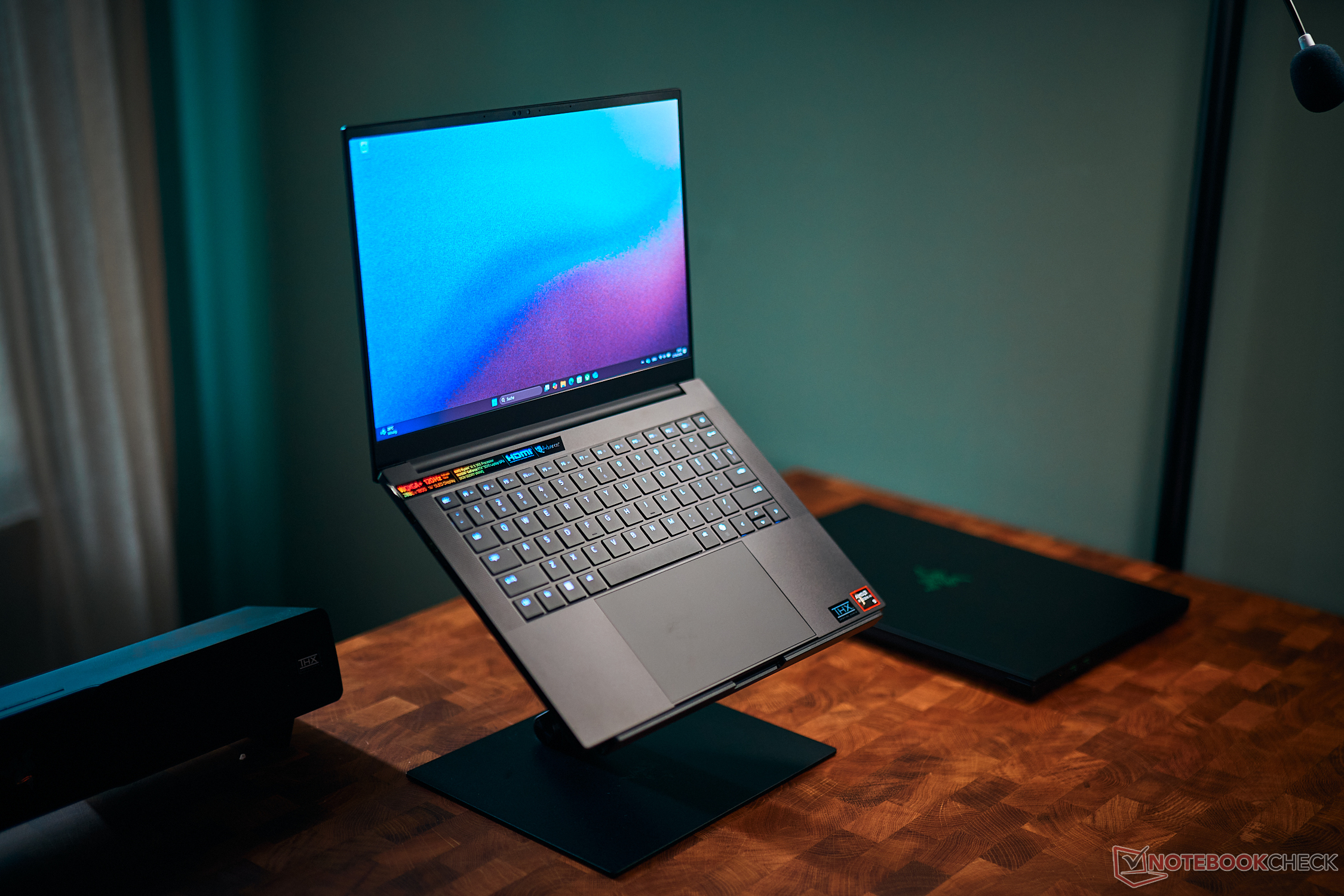

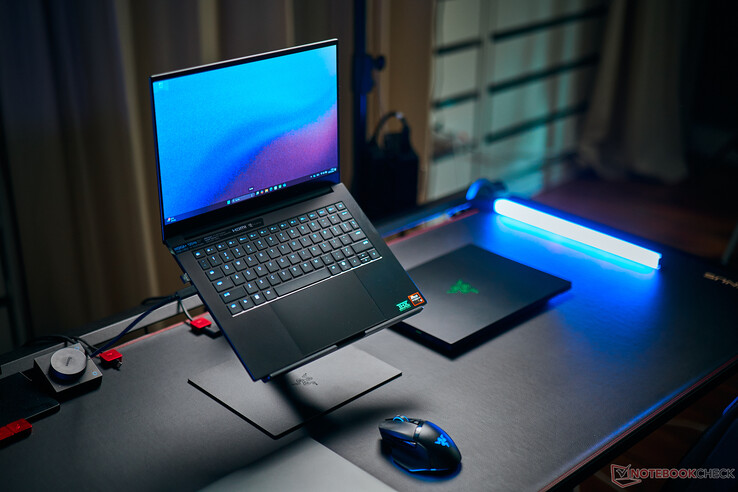














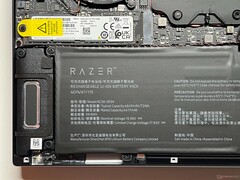
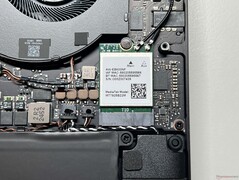
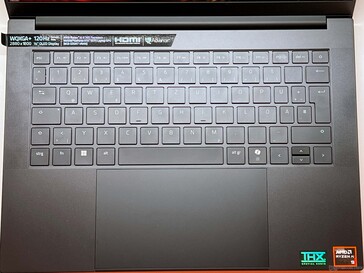
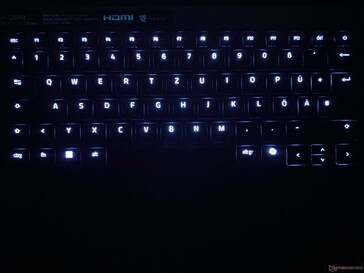


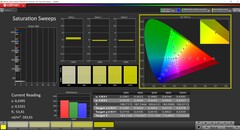





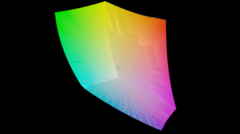
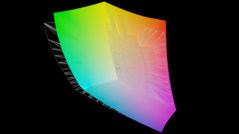
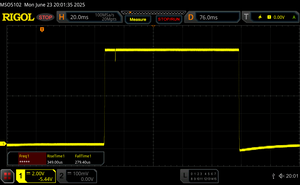
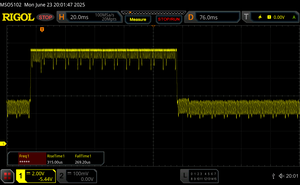














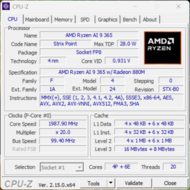
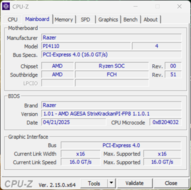

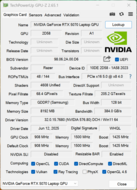
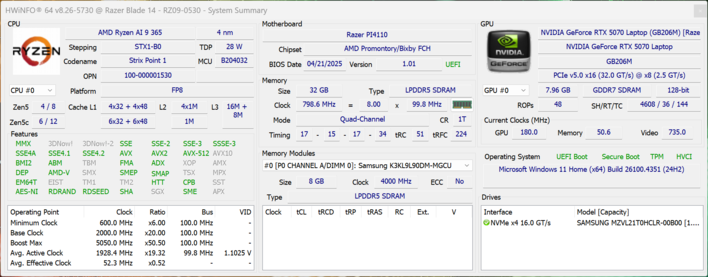



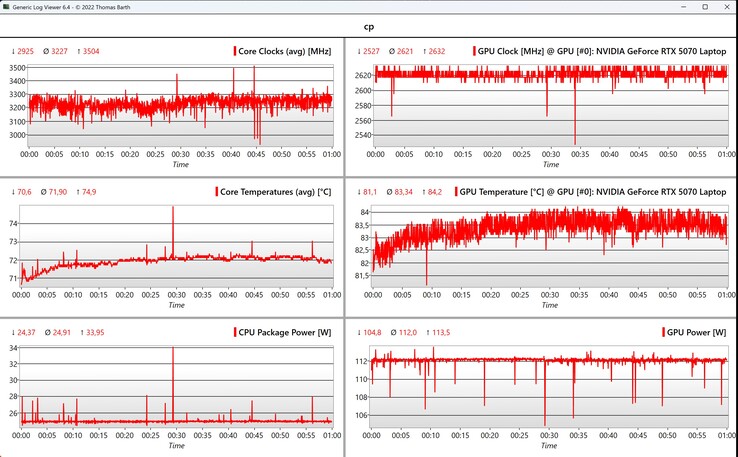
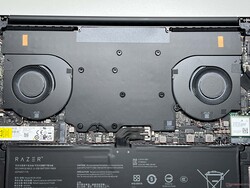
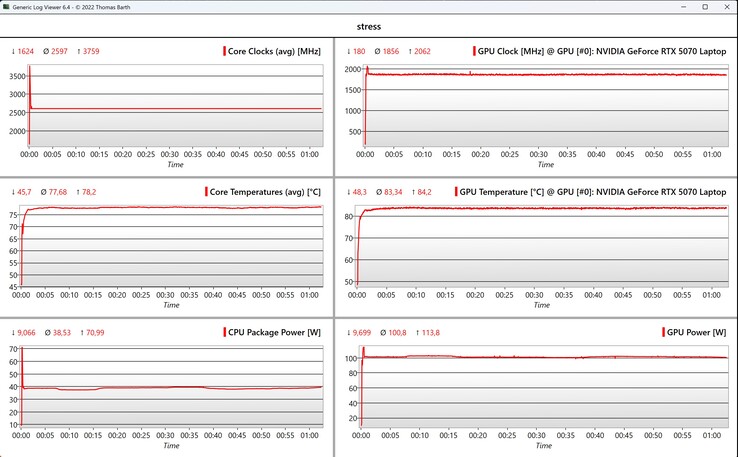


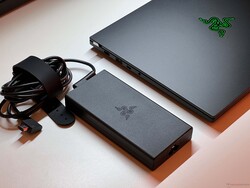

 Total Sustainability Score:
Total Sustainability Score: 





